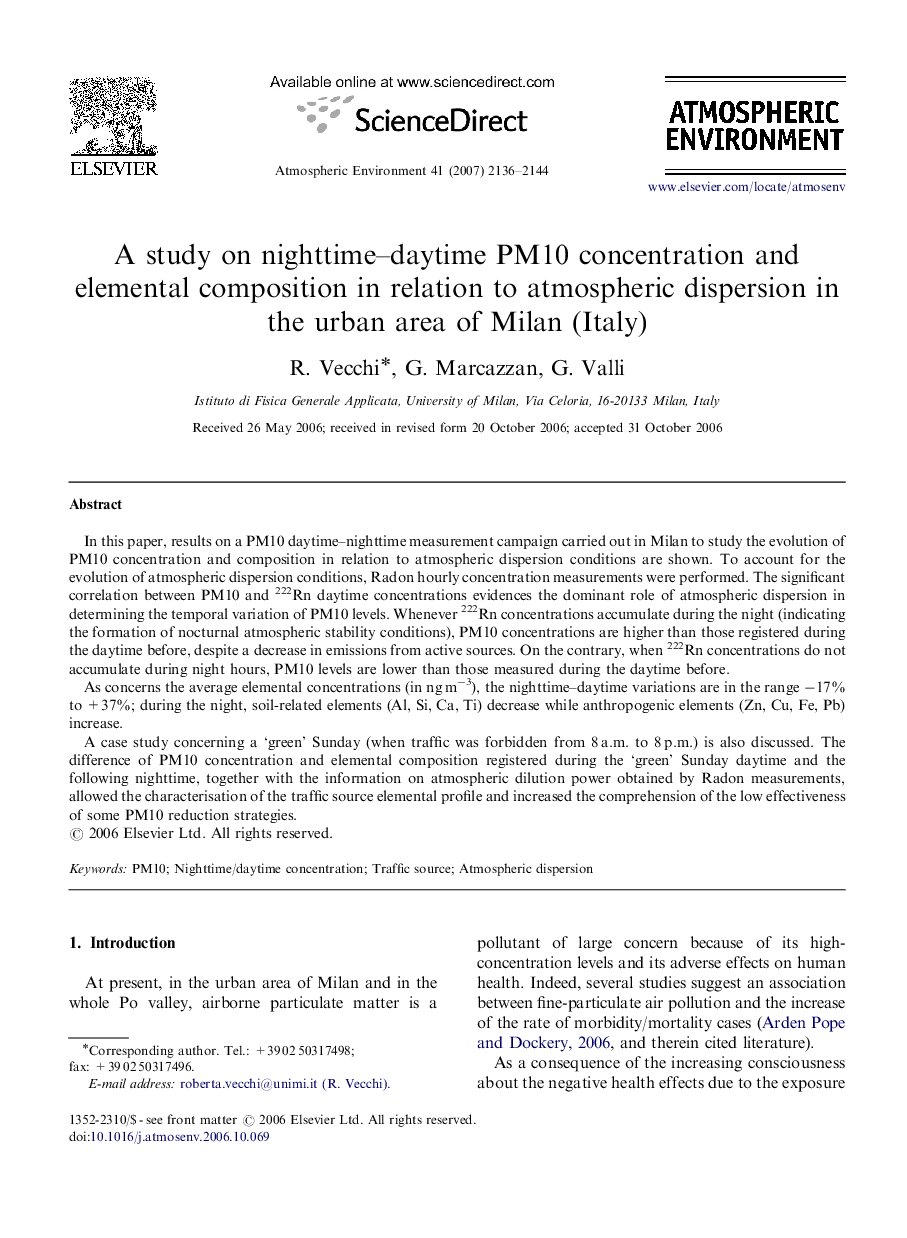| Article ID | Journal | Published Year | Pages | File Type |
|---|---|---|---|---|
| 4443476 | Atmospheric Environment | 2007 | 9 Pages |
In this paper, results on a PM10 daytime–nighttime measurement campaign carried out in Milan to study the evolution of PM10 concentration and composition in relation to atmospheric dispersion conditions are shown. To account for the evolution of atmospheric dispersion conditions, Radon hourly concentration measurements were performed. The significant correlation between PM10 and 222Rn daytime concentrations evidences the dominant role of atmospheric dispersion in determining the temporal variation of PM10 levels. Whenever 222Rn concentrations accumulate during the night (indicating the formation of nocturnal atmospheric stability conditions), PM10 concentrations are higher than those registered during the daytime before, despite a decrease in emissions from active sources. On the contrary, when 222Rn concentrations do not accumulate during night hours, PM10 levels are lower than those measured during the daytime before.As concerns the average elemental concentrations (in ng m−3), the nighttime–daytime variations are in the range −17% to +37%; during the night, soil-related elements (Al, Si, Ca, Ti) decrease while anthropogenic elements (Zn, Cu, Fe, Pb) increase.A case study concerning a ‘green’ Sunday (when traffic was forbidden from 8 a.m. to 8 p.m.) is also discussed. The difference of PM10 concentration and elemental composition registered during the ‘green’ Sunday daytime and the following nighttime, together with the information on atmospheric dilution power obtained by Radon measurements, allowed the characterisation of the traffic source elemental profile and increased the comprehension of the low effectiveness of some PM10 reduction strategies.
